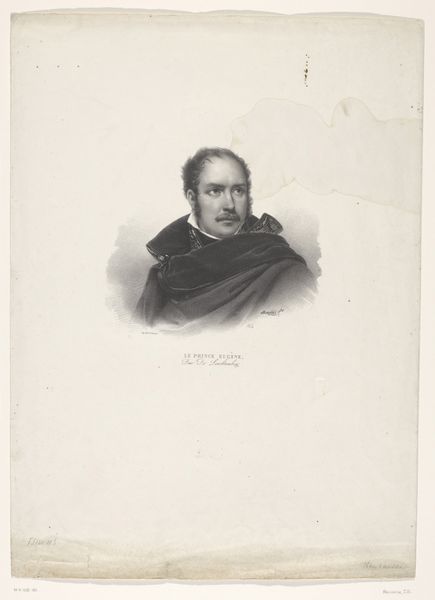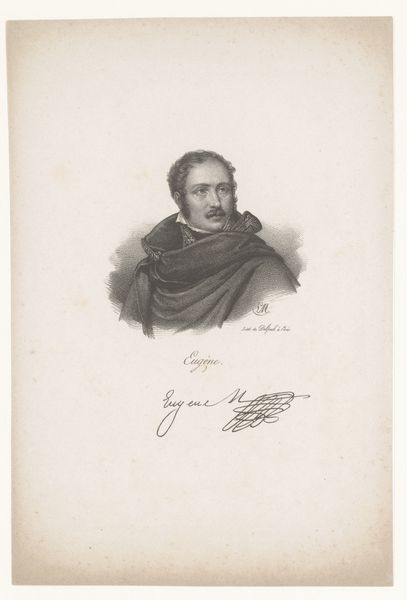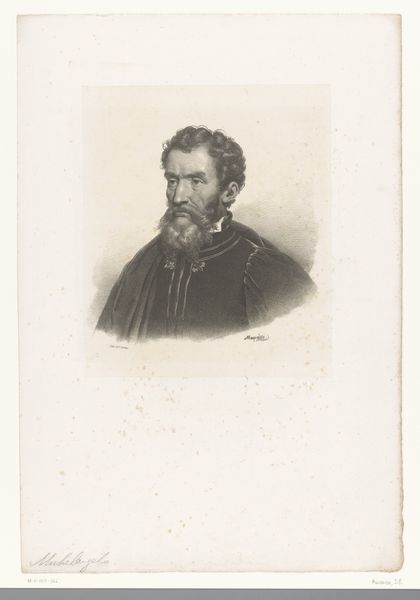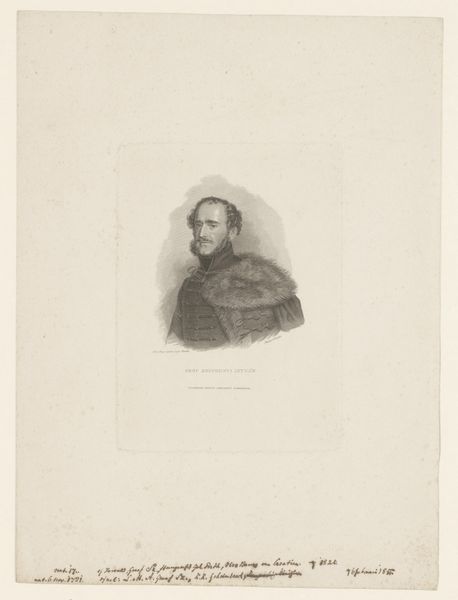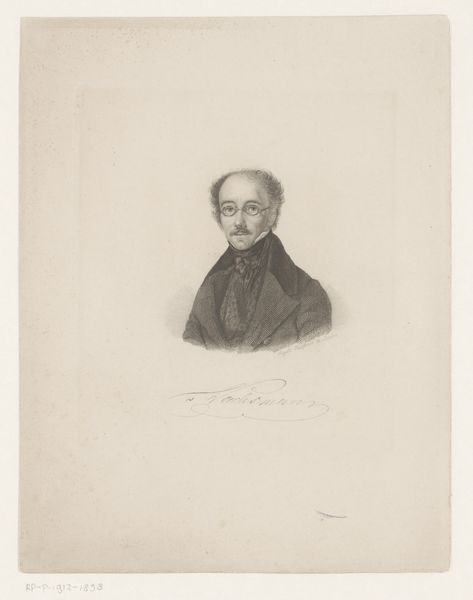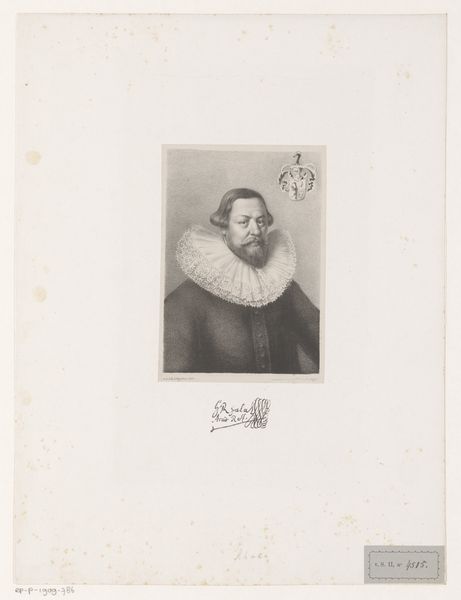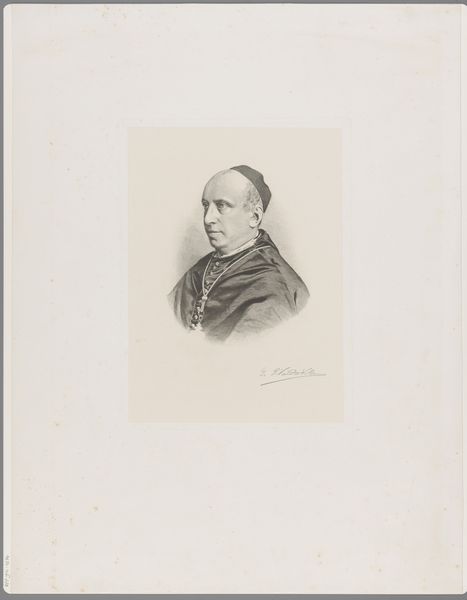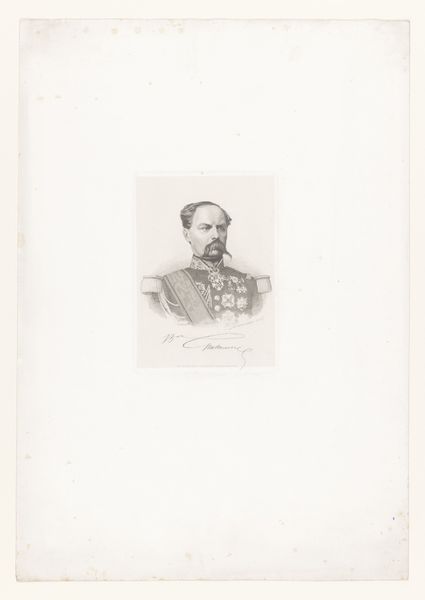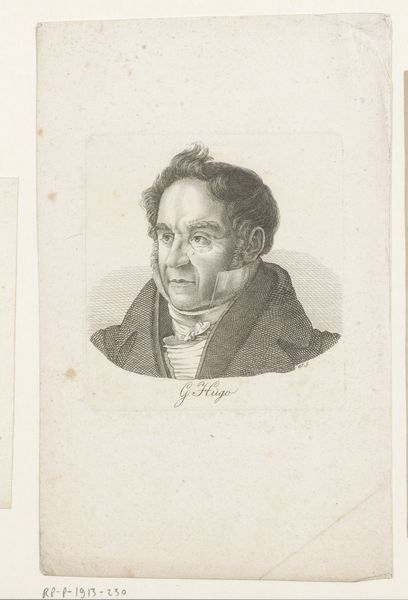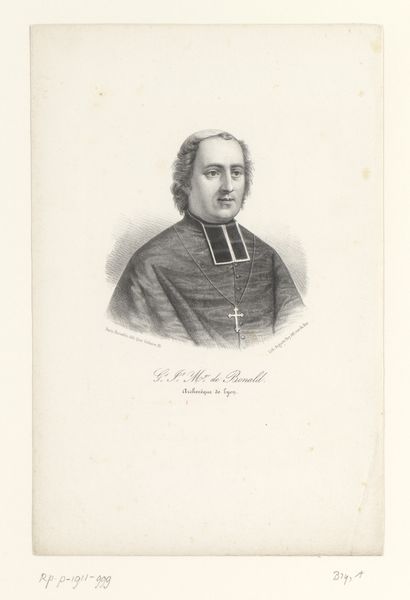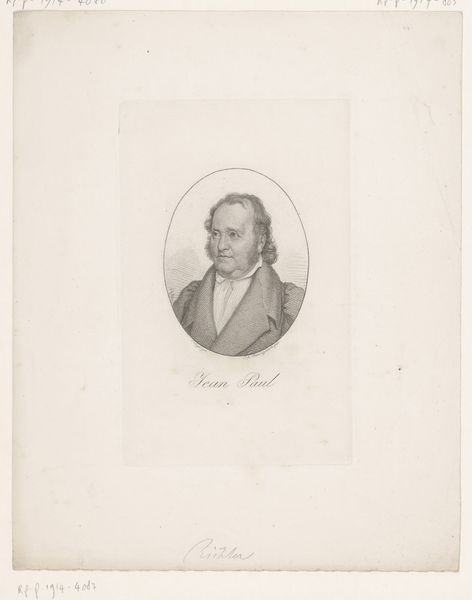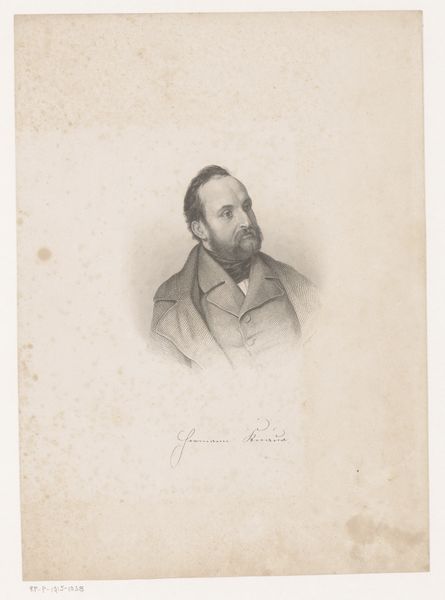
engraving
#
portrait
#
neoclacissism
#
pencil drawing
#
engraving
Dimensions: height 188 mm, width 146 mm
Copyright: Rijks Museum: Open Domain
Curator: Welcome. Today, we’re observing François Louis Couché’s portrait of Eugène de Beauharnais, rendered in engraving. It’s held in the Rijksmuseum, dating sometime between 1805 and 1849. Editor: The subject is powerful. Even in monochrome, the rendering conveys so much emotion. A regal yet melancholic presentation with stark compositional restraint and minimal adornment that gives it immense presence. Curator: Precisely. Consider how the lines are etched with such precision, giving dimension and structure. We see Couché utilizes the medium of engraving to deliver fine detail but he manages to use that fineness for broader, emotionally expressive strokes in this portrait of a subject shrouded in political import. The cape seems particularly calculated for its dramatic presence. Editor: Right! Symbolically, the draped cape lends gravitas, aligning him with classical depictions of statesmen. Thinkers like Seneca—also, what an overt statement about the shelter he could provide to those he favored. I note also the way he looks slightly away as though divining events far in the distance, or perhaps simply uncomfortable in the present, with its strict social hierarchies. Curator: It aligns very neatly with neoclassicism as a whole, whose lines borrow not merely compositional devices of the past but statements about that past itself—the Age of Reason’s search for the virtues of their Hellenic and Roman forbearers. Even within portraiture there are conventions employed here in an understated manner for his subtle approach. Editor: And the man himself—Beauharnais, Napoleon’s stepson. So, the symbols of power and ambition intertwine in the man and his title, and in this depiction, so that it tells a very interesting and multi-layered story. Curator: Exactly. When we examine form and historical role as complementary factors in an artistic moment like this engraving of Eugène de Beauharnais, we reveal the depth and detail. Editor: What was first taken to be mere appearance turns out to possess quite rich significance once a little focused thought has been spent upon it.
Comments
No comments
Be the first to comment and join the conversation on the ultimate creative platform.
